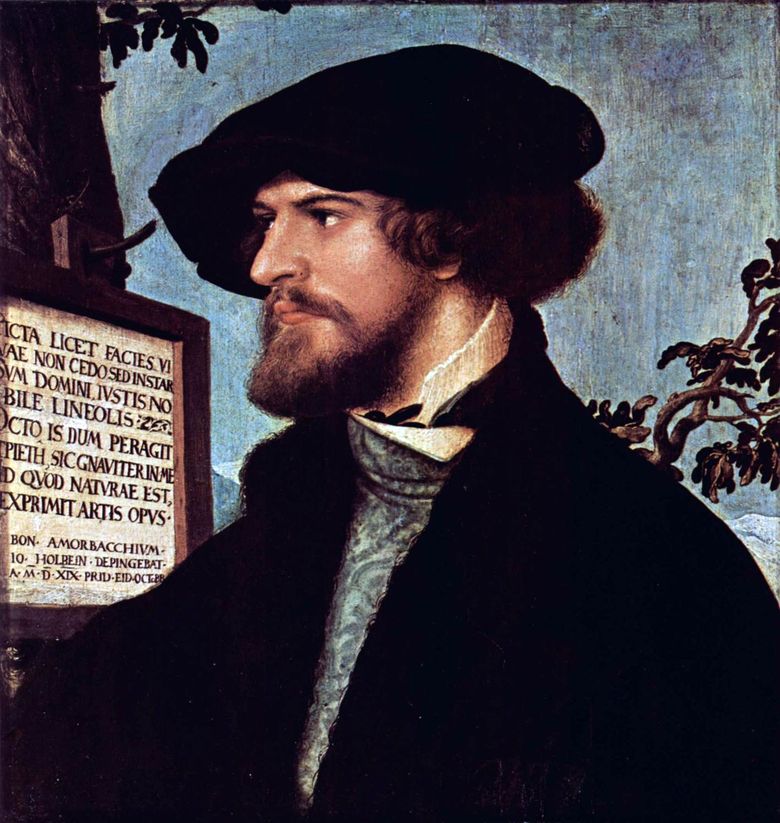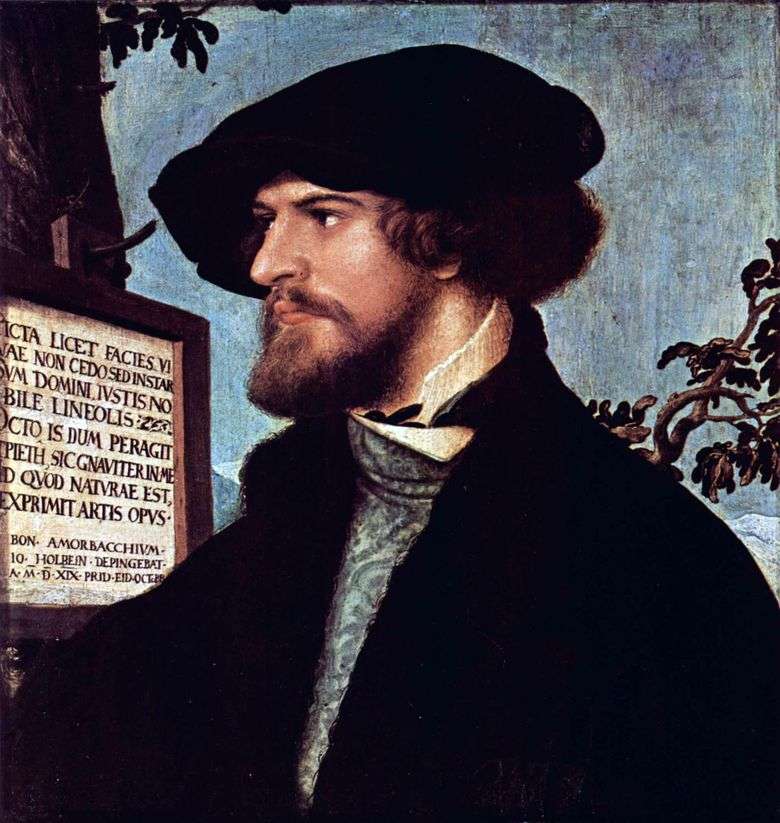
Hans Holbein the Younger is the most harmonious among German Renaissance artists. He studied in Outsburg, in his father’s workshop. In 1515, Holbein moved to Basel, where he immediately fell into the orbit of advanced spiritual currents. Holbein’s work is multifaceted: he paints portraits, works on book illustration, altar images.
In everything, whatever the hand of the master touches, the integrity of nature, the calm clear spirit and inner self-confidence always affect. The greatest glory Holbein brought portraits. Among the great portrait painters of the world, Holbein can be classed as the most objective observers, with incredible accuracy reproducing after the physical features of the exterior all the identity of the individual and its spiritual makeup.
The portrait of the humanist Boniface Amerbach, the friend of Erasmus of Rotterdam, the publisher’s son, is one of the first works performed by Holbein immediately after a trip to Italy, where. having come in contact with the ideas of Italian humanism, he was even more firmly established in the realization of the high appointment of the artist-creator.
The master expressed this idea in the Latin inscription depicted on the portrait, with the eloquent language of his time praising not only the model, but also the creator of the portrait. The picture is small in size, but the artistic-imaginative solution gives it monumentality. The features of Amerbach’s face are strict and noble.
 Portrait de Boniface Amerbach – Hans Holbein
Portrait de Boniface Amerbach – Hans Holbein Self-Portrait by Hans Holbein
Self-Portrait by Hans Holbein Portrait of Erasmus of Rotterdam by Hans Holbein
Portrait of Erasmus of Rotterdam by Hans Holbein Edward, Prince of Wales by Hans Holbein (Younger)
Edward, Prince of Wales by Hans Holbein (Younger) Retrato de Boniface Amerbach – Hans Holbein
Retrato de Boniface Amerbach – Hans Holbein Erasmus of Rotterdam by Hans Holbein
Erasmus of Rotterdam by Hans Holbein Portrait of Jacob Mayer by Hans Holbein
Portrait of Jacob Mayer by Hans Holbein Portrait of the French ambassador in England, Sir Moretta Charles de Soleil by Hans Holbein
Portrait of the French ambassador in England, Sir Moretta Charles de Soleil by Hans Holbein